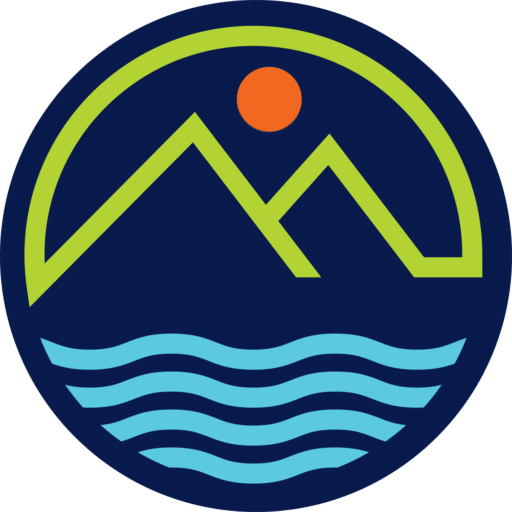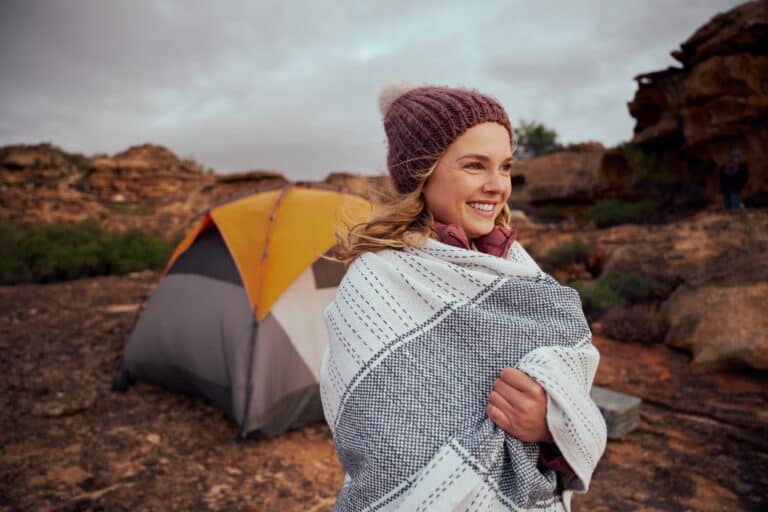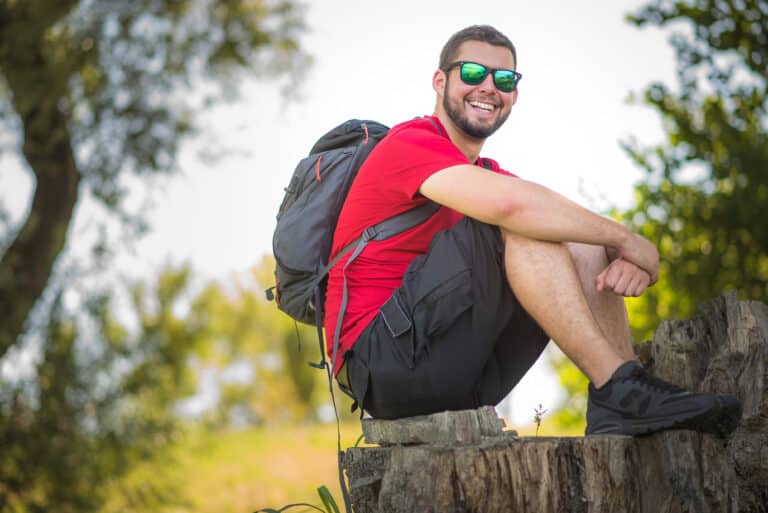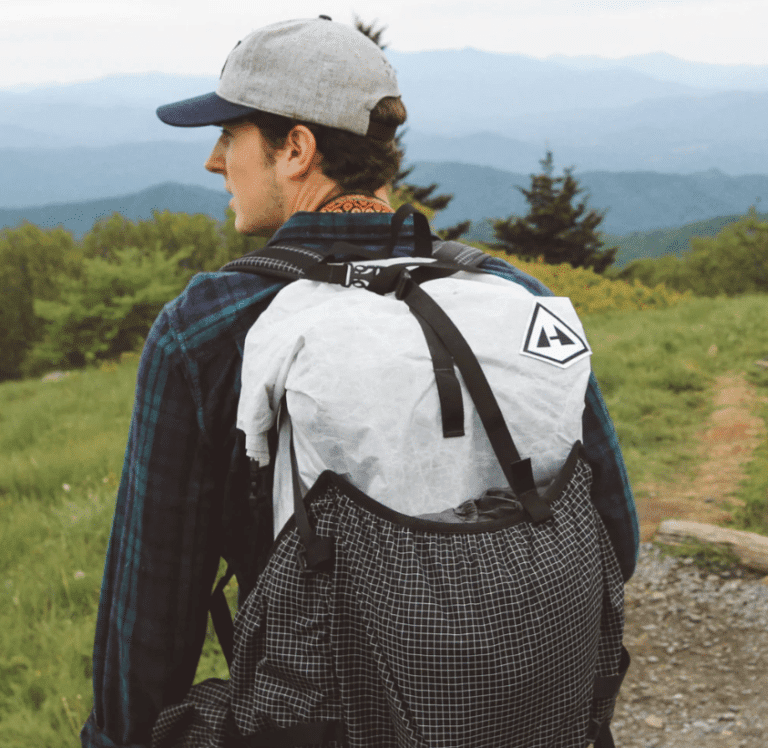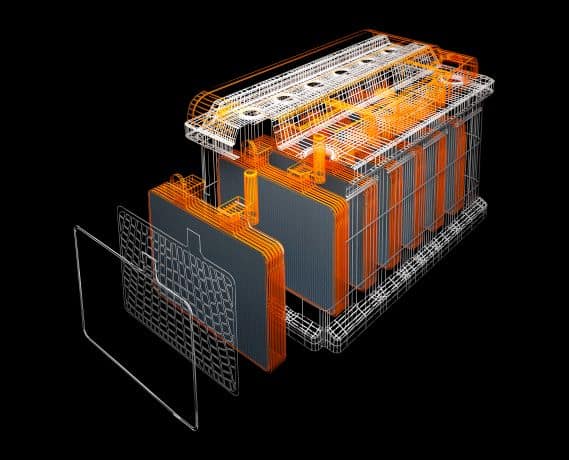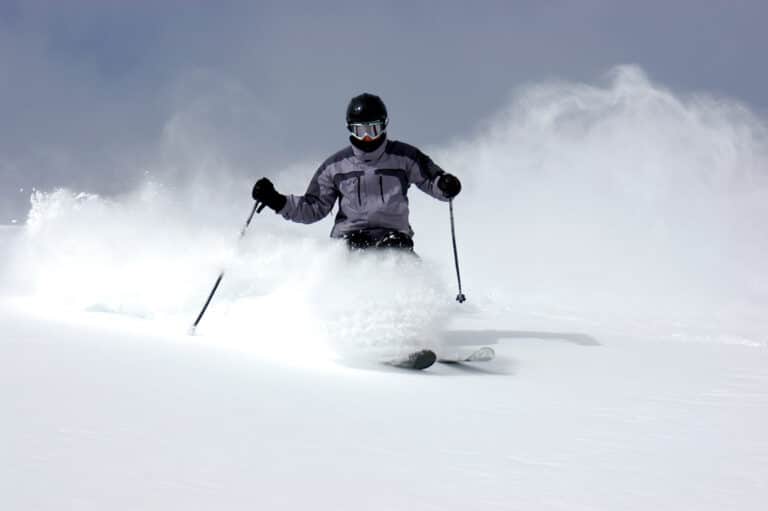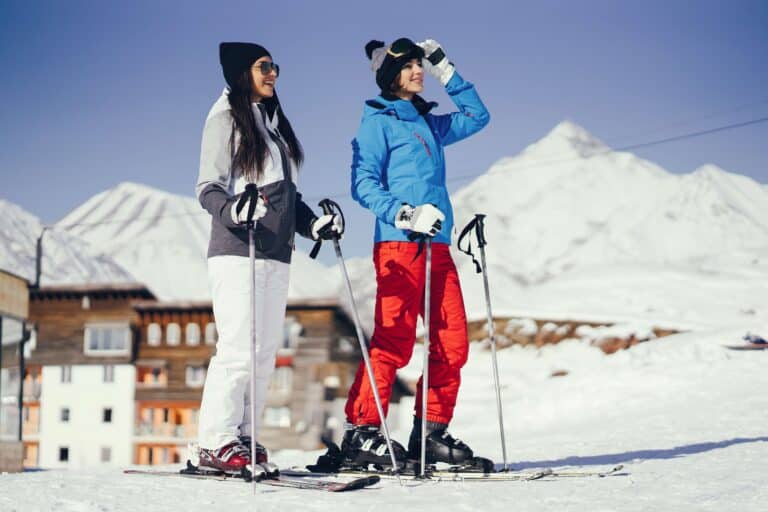The Best Snowshoes for Beginners in 2024: Keeping You Afloat
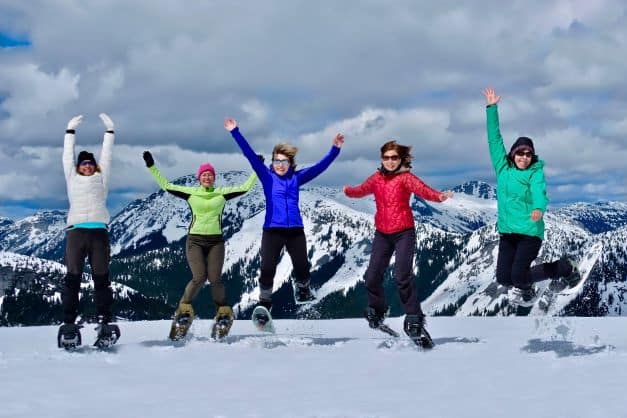
Our content may include affiliate links, through which we earn a small commission on purchases. Want to learn more about us? Read here.
If you’re a beginner to snowshoeing, the sheer number of snowshoes on the market can be overwhelming. How do you know which snowshoes are right for you?
First, consider where and how you’ll be using your snowshoes. If you’re mostly planning on snowshoeing on packed trails, you’ll need a different snowshoe than if you’re planning on venturing off-trail into deep powder.
Second, consider your own physical fitness and abilities. If you’re relatively fit and have no problems walking long distances, you can opt for a lighter-weight snowshoe.
If you’re carrying extra weight or are likely to tire easily, look for a snowshoe with more support and cushioning.
Finally, consider your budget. Snowshoes can range from around $100 to $300 or more.
What are the best snowshoes for beginners?
Here are our picks for the best snowshoes for beginners in 2023:
- Best Overall: MSR Lightning Ascent
- Best Overall Runner-Up: MSR Revo Ascent
- Best Backcountry: Crescent Moon Big Sky
- Best Packed Trail: Atlas Helium Trail
- Best Budget: Tubbs Flex STP XL
MSR Lightning Ascent
MSRP $390
best overall
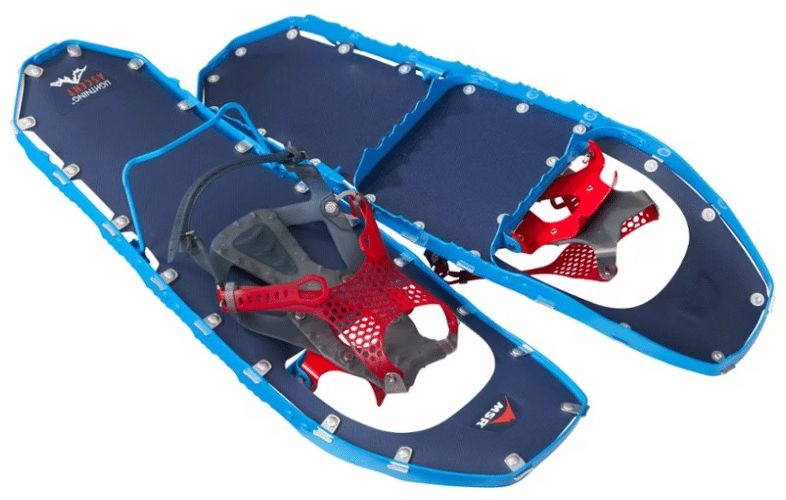
Overview
- The perfect choice for anyone seeking a lightweight and agile snowshoe that can handle any terrain. Featuring advanced Paragon bindings, these snowshoes provide a secure fit for a wide range of boots, while the ballistic-grade decking ensures long-lasting durability. The 360° traction frames deliver edge-to-edge grip, and the steel DTX crampons provide serious bite in challenging conditions. The Ergo Televator heel lifts help reduce fatigue on steep ascents.
- Lengths: 22, 25, 30 in.
- Weight: 3lbs 12oz, 3lbs 14oz, 4lbs 12oz
- Terrain: All-terrain
Pros
Cons
MSR Revo Ascent
MSRP $220
best overall runner-up
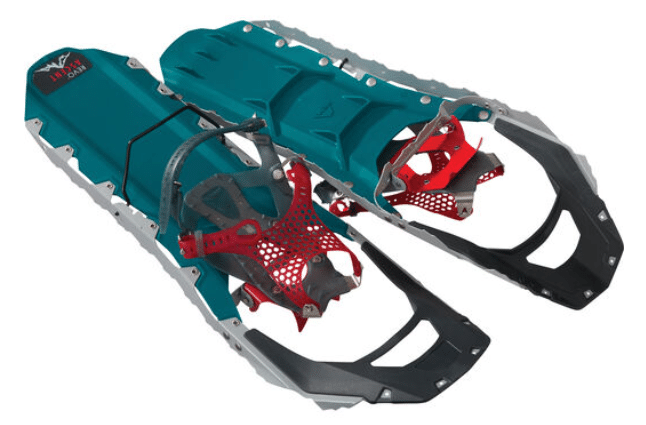
Overview
- The injection-molded ExoTract decks are built to withstand the abuse, while the torsional flex allows for a smooth, comfortable stride. The Paragon bindings are designed to keep your feet securely in place while offering great control and maneuverability. And the aggressive perimeter teeth and steel DTX crampons provide exceptional traction on all terrain. And the Ergo Televators make climbing steep hills a breeze while reducing fatigue.
- Lengths: 22, 25 in
- Weight: 4lbs 7oz, 4lbs 11oz
- Terrain: All-terrain
Pros
Cons
Crescent Moon Big Sky 32
MSRP $192
best backcountry
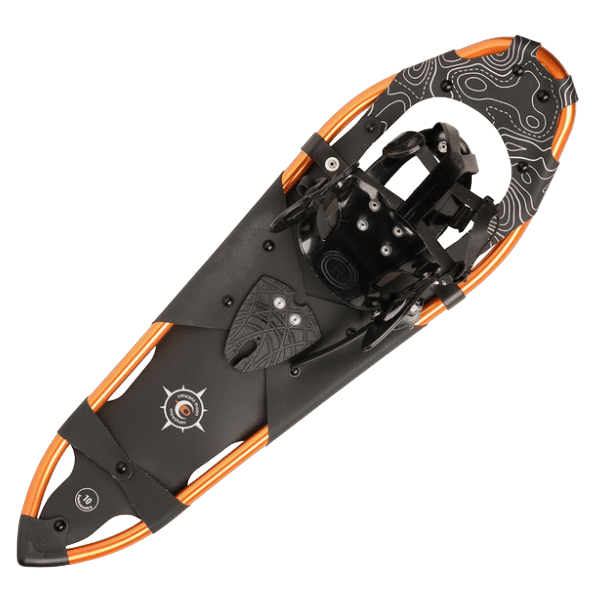
Overview
- Perfect choice for hiking across deep, untracked snow. Incredibly lightweight, they’ll float you and your gear in the deepest conditions. The SPL binding will accommodate some very big feet, up to size 16. So if you’re looking for a snowshoe that can handle the deepest conditions, the Denali 37 is the ideal choice.
- Lengths: 32 in.
- Weight: 4 lbs 15.2 oz
- Terrain: Backcountry Powder
Pros
Cons
Atlas Helium Trail
MSRP $150
best packed trail
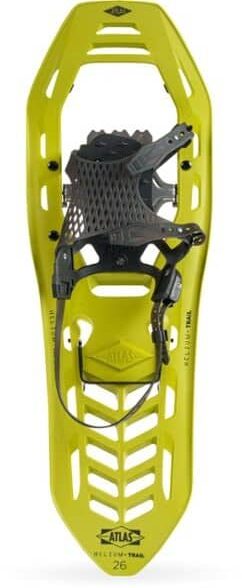
Overview
- Ultralight and designed for easy maneuverability, they’re ideal for beginner snowshoers or those embarking on less-than-extreme winter hikes. The Wrapp™ Stretch bindings provide a comfortable and secure fit, while the simple and intuitive 2-buckle closure allows easy entry and exit. The easy-climb 12° heel lifts make traversing hills a breeze, and the Crampon’s forefoot-aligned tempered steel tangs and the steel traction rails provide the grip needed when trails become packed down or uneven.
- Lengths: 23, 26, 30 in.
- Weight: 3lbs 2oz, 3lbs 7oz, 3lbs 12oz
- Terrain: Rolling Terrain
Pros
Cons
Tubbs Flex STP XL
MSRP $127
best budget
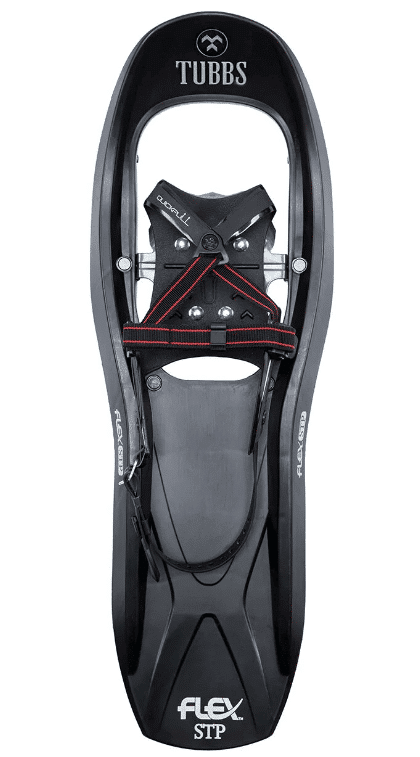
Overview
- These versatile shoes are designed for new snowshoers or those looking for a casual day on the trails. The Torsion Deck composite enhances traction and helps preserve your natural gait, while the QuickPull binding is easy to use and keeps your heels aligned. The forefoot webbing strap unlocks with a single buckle push, making getting in and out of your snowshoes easier.
- Lengths: 24, 28 in.
- Weight: 3lbs 6oz
- Terrain: Easy Terrain
Pros
Cons
What is Heel Lift in Snowshoeing?
The heel lift is a feature of some snowshoes that helps to reduce fatigue while walking. It works by elevating the heel, shifting your weight slightly forward and taking some pressure off the calf muscles.

A heel lift can be particularly helpful when carrying a heavy load or walking uphill.
Not all snowshoes have heel lifts, so it is something to look for if you know you will be walking in deep snow.
Additionally, some snowshoes have adjustable heel lifts, which can be handy if you need to fine-tune the amount of elevation.
Why Use Heel Lift?
You might want to use a heel lift while snowshoeing for a few reasons. First, as we mentioned, it can help reduce calves’ fatigue.
This is because when your heel is lifted, your weight is shifted forward slightly, and the calf muscles don’t have to work as hard to keep you moving.
Second, using a heel lift can also help to prevent ankle injuries. When your weight is shifted forward, it takes some pressure off the ankles and helps stabilize them.
This can be particularly helpful when walking on uneven or slippery terrain.
Finally, a heel lift can also make it easier to walk uphill. By shifting your weight forward and taking some pressure off the calf muscles, heel lift can help you maintain a more even pace as you walk uphill.
How to Use Heel Lift?
If your snowshoes have a heel lift, it is usually activated by a lever or switch near the toe of the shoe.
Flip the lever or switch into the “on” position to use the heel lift. You may need to experiment to find the perfect setting for your needs, but most snowshoes with heel lifts will have multiple positions you can choose from.
Once you turn on the heel lift, you will likely notice that walking feels slightly different. This is normal and means that your weight is now shifted slightly forward.
If the heel lift is too much, you can constantly adjust or turn it off completely.
When to Use Heel Lift?
The heel lift can be used any time you are snowshoeing, but there are certain times when it may be particularly helpful. For example, a heel lift can take some pressure off your calves and help you maintain a more even pace if you are carrying a heavy load.
Additionally, if you are walking uphill or on uneven terrain, a heel lift can help to stabilize your ankles and prevent injuries.
A heel lift can be a great option if you want to reduce fatigue while snowshoeing. By shifting your weight forward and taking some pressure off the calf muscles, heel lift can help you walk longer distances with less effort.
What is a Binding System on a Snowshoe?
The binding system is the interface between you and your snowshoes. It must provide adequate support and comfort while allowing for a full range of motion. There are three main types of binding systems:
Full-length straps
These extend from the toe of the snowshoe to the heel, providing maximum support and stability. They can be tightened or loosened as needed and are often used in more challenging terrain.
Mid-foot straps
These extend from the sides of the snowshoe, wrapping around the midfoot area. They provide good support and stability but allow for more flexibility than full-length straps.
Heel lifts
These are located at the back of the snowshoe and help to reduce fatigue by keeping your heels elevated. They can be raised or lowered as needed and are often used on long hikes or deep snow.
When choosing a binding system, it is crucial to consider your own needs and preferences. full-length straps may be ideal for someone who wants maximum support, while mid-foot straps may be better for someone who values flexibility.
Ultimately, the best binding system is the one that works best for you.
What is the Surface Area of a snowshoe?
The surface area measures how much snowshoe is in contact with the ground. This is important because it determines how much flotation your snowshoe has.
The larger the surface area, the more flotation, and the better for deep powdery snow. However, a larger snowshoe also means more weight and bulkiness, so finding a balance that works for you is essential.
What are Bindings?
Bindings are what keep your foot attached to the snowshoe. There are three main types of bindings: ratchet bindings, heel lift bindings, and rotatable toe cord bindings.
Ratchet bindings are the most common type and offer good support and easy adjusting. Heel lift bindings are standard in racing snowshoes and allow you to raise your heel for climbing.
Rotatable toe cord bindings are newer on the market and offer good support with a more natural feel.
What are Crampons?
Crampons are metal spikes that attach to the bottom of your snowshoe and provide traction on icy or hard-packed snow. They are essential for safety, especially if you plan on doing any off-trail hiking.
Most snowshoes come with removable crampons that can be added as needed.
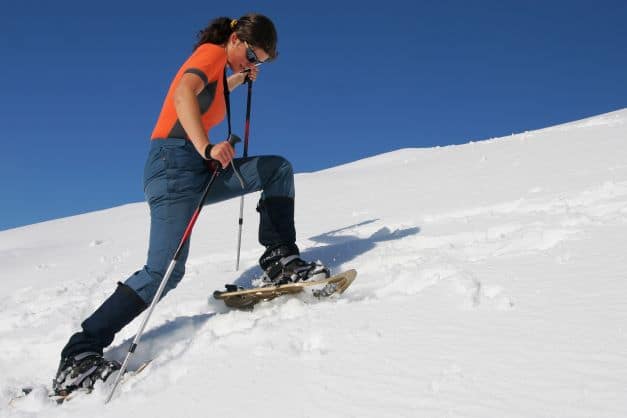
What is Frame?
The frame of a snowshoe is the main body that everything else is attached. Frames can be made from aluminum, plastic, or composite materials.
Aluminum frames are the most common and offer a good balance of weight and durability.
Plastic frames are lighter in weight but not as durable. Composite frames are the strongest and lightest option but also the most expensive.
What is a Heel cup?
The heel cup is the back part of the binding that holds your heel in place. It should be snug but not too tight. A good heel cup will keep your foot from slipping out of the binding while still being comfortable to walk in.
What is a Toe box?
The toe box is the front part of the binding that holds your toes in place. It should be snug but not too tight. A good toe box will keep your foot from slipping out of the binding while still being comfortable to walk in.
What is Traction?
Traction is the ability of your snowshoe to grip the ground and provide stability. This is important for both uphill and downhill hiking.
Most snowshoes have some form of traction built into the frame or binding, but you can also add removable crampons for extra grip on icy or hard-packed snow.
Why is Weight Significant?
Weight is an important consideration when choosing a snowshoe. The lighter the snowshoe, the easier it will be to hike in. However, lighter snowshoes are also usually less durable and have less flotation.
So it’s crucial to find a balance that works for you.
What is Width?
Width is the measurement of how comprehensive your snowshoe is. This is important because it determines how much flotation your snowshoe has. The wider the snowshoe, the more flotation, and the better for deep powdery snow.
However, a wider snowshoe also means more weight and bulkiness, so finding a balance that works for you is essential.
FAQ
How do I know what snowshoes to buy?
Choosing the right snowshoes is important for a safe and enjoyable experience. Consider your athletic ability, weight, and the conditions you will be snowshoeing in when selecting.
For beginners, it is recommended to choose snowshoes that are easy to use and provide good stability. Look for lightweight snowshoes with wide flotation. As you progress, you can choose snowshoes that are more versatile and can handle a wider range of conditions. Be sure to check the weight capacity of the snowshoes before purchasing them to ensure they can support your weight.
Should I get 21-inch or 25-inch snowshoes?
Consider your weight, snow conditions, and personal preferences when choosing snowshoes. Generally, snowshoe size is correlated with user weight. 21-inch snowshoes are suitable for users weighing less than 125 pounds, while 25-inch snowshoes are ideal for those between 125 and 175 pounds. For deeper snow or heavier loads, opt for larger snowshoes.
Consider the terrain you’ll be exploring. Smaller snowshoes are more maneuverable on groomed trails, while larger snowshoes provide better flotation in deep powder. Additionally, snowshoes with crampons offer enhanced traction on hard or icy surfaces. Choose snowshoes that match your weight, preferences, and the conditions you’ll encounter.
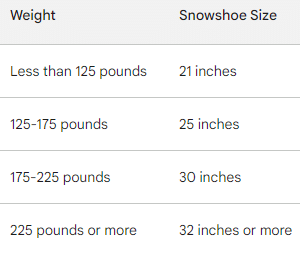
Is it better to have bigger or smaller snowshoes?
Choosing between larger or smaller snowshoes depends on your weight, intended terrain, and personal preferences. Generally, larger snowshoes offer better flotation in deep powder, catering to heavier individuals or those exploring off-trail terrains.

However, their maneuverability may be compromised. On the other hand, smaller snowshoes are easier to control and suitable for groomed trails or packed snow, but they may not provide adequate flotation in deep snow.
Ultimately, the best way to decide is to try different sizes and consult a local outdoor store professional to find the perfect fit for your needs and preferences based on your weight, terrain, and snow conditions.
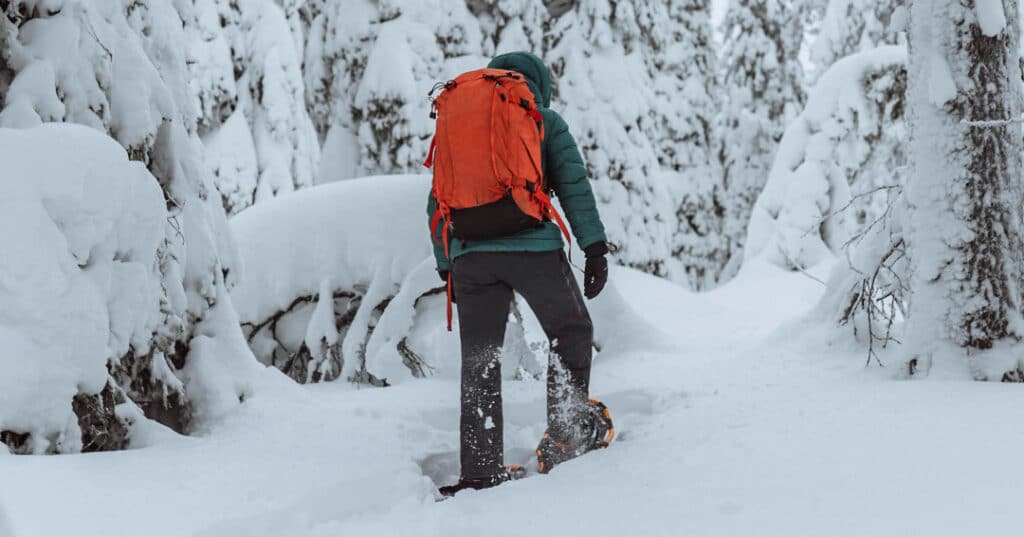
Remember, when you purchase your snowshoes, go with a size for the terrain you’ll be adventuring in most of the time. The larger the snowshoe, the greater the fatigue.
Conclusion
Snowshoeing is an activity that people of all ages and fitness levels can enjoy. Snowshoeing is a truly rewarding winter pastime with its many benefits, including improved cardiovascular health, increased balance and coordination, and a heightened appreciation for the beauty of nature.
Whether you’re a seasoned adventurer or a curious beginner, a perfect pair of snowshoes is waiting to take you on your next winter escapade. So, lace up those snowshoes, venture into the snowy wonderland, and discover the joys of exploring the winter wilderness.
